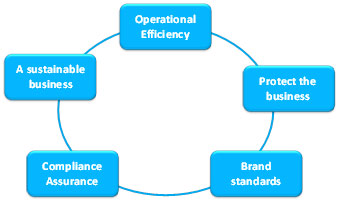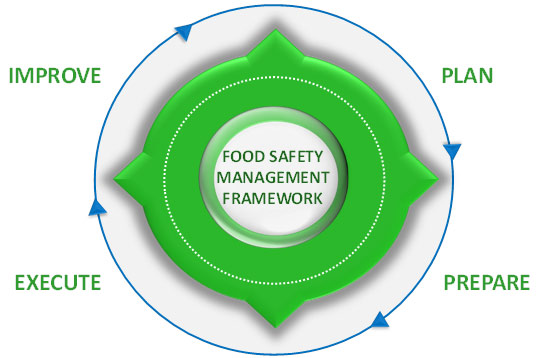Is Your Restaurant At Risk?

Is Your Restaurant At Risk?
By: Katie Das, global marketing manager, Diversey Consulting
You can’t change a customer’s first impression of your restaurant. From the moment patrons walk through the front door, they are looking for a clean, visually-pleasing environment. Diners’ expectations have never been higher and the overall dining experience is what will keep them returning. As an operator, your commitment to creating a superior dining experience is reflected in the gleaming surfaces of both the dining and kitchen areas.
It’s important to place a high priority on food safety in order to best protect customers, employees and the reputation of your business. Individual incidents of foodborne illness may be somewhat commonplace in today’s world, but widespread outbreaks can be front page news and result in negative backlash, causing sales to plummet.
Both the Food and Drug Administration (FDA) and its Canadian equivalent, Food Retail Food Services Code (FRFSC), report that the occurrence of foodborne illness risk factors found within commercial foodservice operations are statistically higher than commonly believed. According to the 2009 FDA Report on the Occurrence of Foodborne Illness Risk Factors, contaminated equipment and utensils within the foodservice environment were out of health code compliance more than 17 percent of the time. Improper cleaning and sanitization of foodservice equipment, surfaces and utensils were clearly identified as the most significant factor in the food production process.

Microorganisms or allergens are frequently transferred directly onto food or surfaces during the food preparation, serving and storage cycle. Poor hand washing, failure to clean and sanitize a cutting board between uses or using the same preparation table with raw and cooked foods are all examples of how easy it is to move bacteria around the kitchen and create dangerous food safety risks.
Restaurant owners and managers can ensure their facility is in top shape by following these simple rules:
1. Choose the right products and tools
Effective cleaning and sanitization within the foodservice environment will reduce the chance of cross-contamination of “safe food” during processing, preparation, storage and service because soil, bacteria and other microorganisms are physically removed. However, it’s important that restaurants use products and tools that will deliver superior cleaning results. These include chlorine and quat based sanitizers, degreasers and other surface cleaners.
To ensure the proper concentration of chemicals and achieve the best cleaning results, restaurants should install space-saving dispensing systems that provide dilution control. These also eliminate overuse of chemicals and unnecessary waste because employees don’t have to make guesses about dilution.
Employees must also be mindful of the temperature that chemical sanitizers work best at and the contact time that is required to kill harmful microorganisms. A lower contact time can help improve productivity and compliance with cleaning and sanitization but operators should ensure the product is effective at removing bacteria and safe.
2. Create and follow a schedule for cleaning food contact surfaces
Once the right products and tools have been selected, restaurant managers should create an easy-to-follow process that details cleaning and sanitization responsibilities. Since cross-contamination is the most common and critical sanitization failure leading to foodborne illnesses, it’s important that food contact surfaces are thoroughly maintained on a regular basis. These surfaces include any equipment surface or utensil which food may touch during the food production process or via potential “incidental” channels such as food draining, dripping or splashing onto the food preparation areas. For instance, the interior of a microwave oven is considered a food contact surface because food stuck to the sides or ceiling of the oven could drip onto other foods being warmed.

3. Reinforce practices with training
Instances of foodborne illness are usually the result of proper procedure non-compliance so it is critical that every member of a foodservice team knows what constitutes a food contact surface. Additionally, employees should understand the importance of using the proper processes and products to both clean and sanitize.
Online training is an effective tool for standardizing education within a facility and across multiple restaurant locations. It also allows managers to keep track of employees’ test results and identify areas for improvement on an individual basis. Employees should undergo training when they are first hired and periodically throughout the year, as risks and responsibilities change over time.
Every restaurant operator wants a spotless record when it comes to instances of foodborne illness. Keeping kitchen and dining environments clean not only increases safety but encourages customers to return again and again. Choosing the right products and tools, developing proper procedures and implementing effective training protocols for staff are key elements to any successful food service operation.
Katie Das is a global marketing manager at Diversey Consulting, an independent consulting group within Diversey Care that offers solutions for food safety, risk management, operational efficiency and brand protection.
For more information about restaurant solutions, please visit www.diversey.com/consulting.
17th March 2015
















